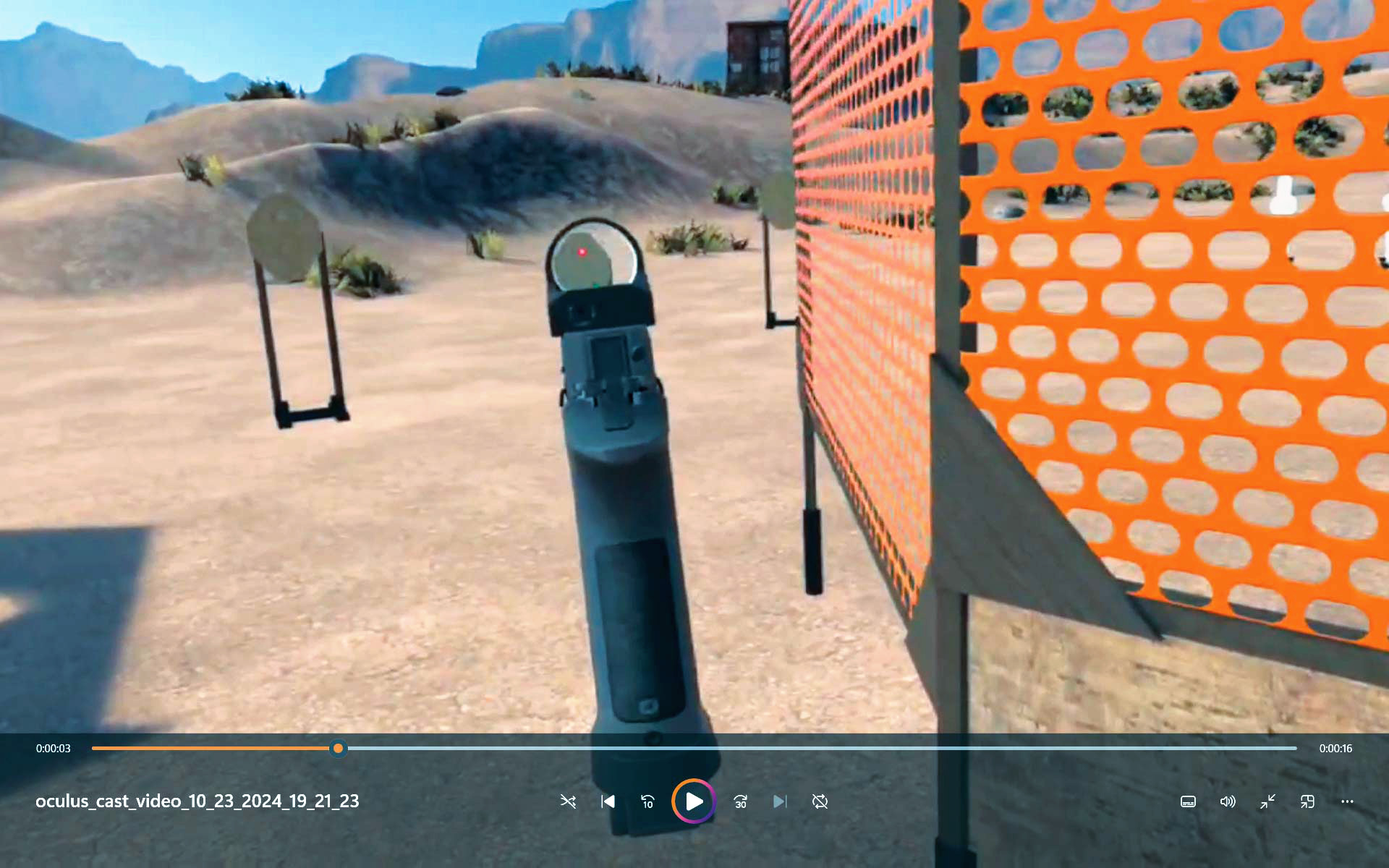
When it comes to technology, my idea of high-tech is to use my laptop as a word processor. But even I’ve noticed the giant leap forward in online learning. Watching videos, listening to lectures, participating in video chats and meetings or taking an exam online can be convenient and cost-effective. But that’s just the basics — it doesn’t scratch the surface of where online training is headed.
The quality of virtual reality (VR) training options is increasing rapidly. Soon, VR technology will revolutionize the way officers are trained. These systems immerse users in realistic, interactive scenarios, providing a controlled environment for developing critical skills. This improves the quality of training by offering flexibility for instructors to create better scenarios, while also reducing costs and increasing convenience.
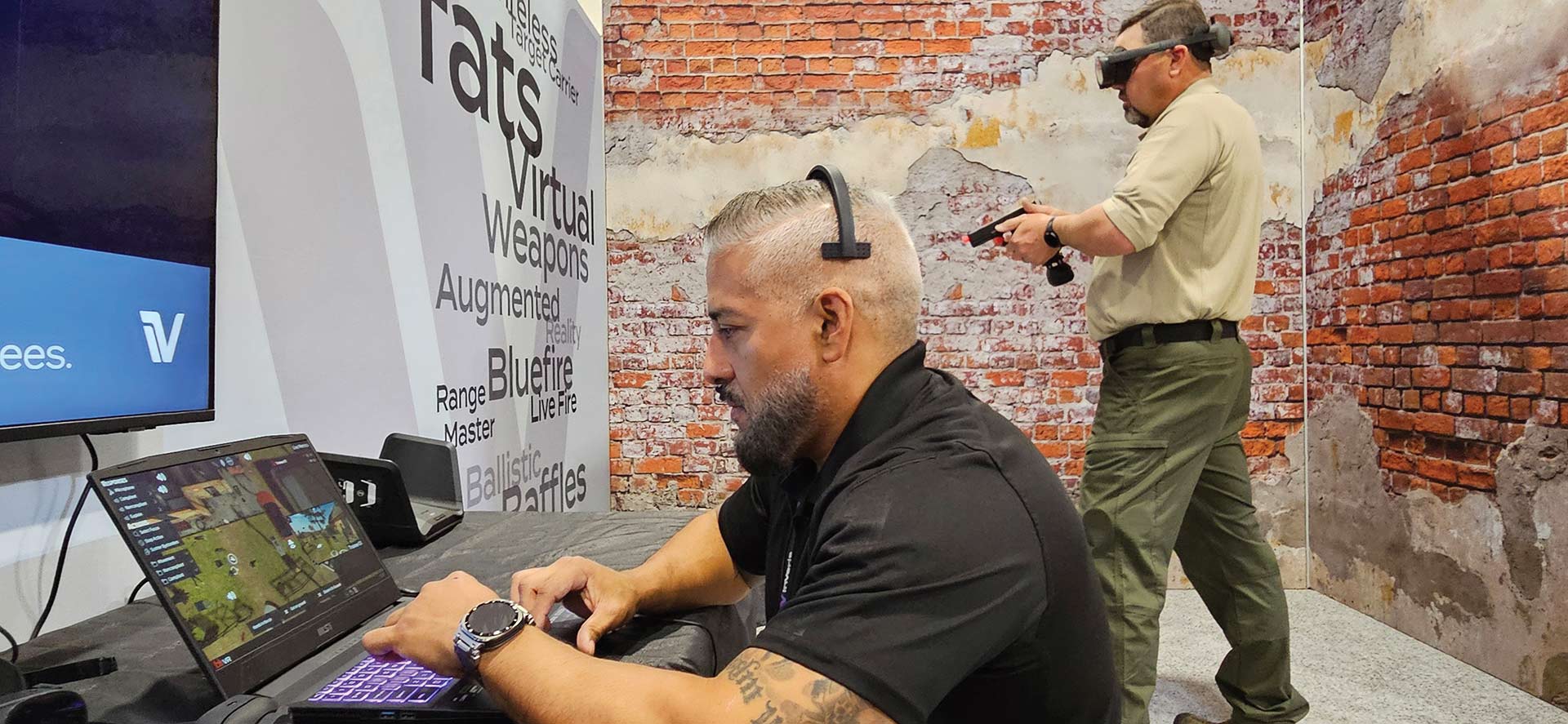
Firearms, use of force and more
When officers hear the term “virtual reality” used in training, they often think immediately of shooting or de-escalation skills. While these are important and currently dominate the VR environment, they are just the beginning. Within the next decade, VR will become the primary method of training officers.
VR makes training holistic. Instead of doing a use-of-force scenario, VR can cover everything from driving to setting up perimeters around a crime scene. A single scenario could integrate multiple officers responding simultaneously from different patrol areas, all while being in the same training location.
Here’s a quick rundown of some VR systems I’ve tested and used over the past few months.
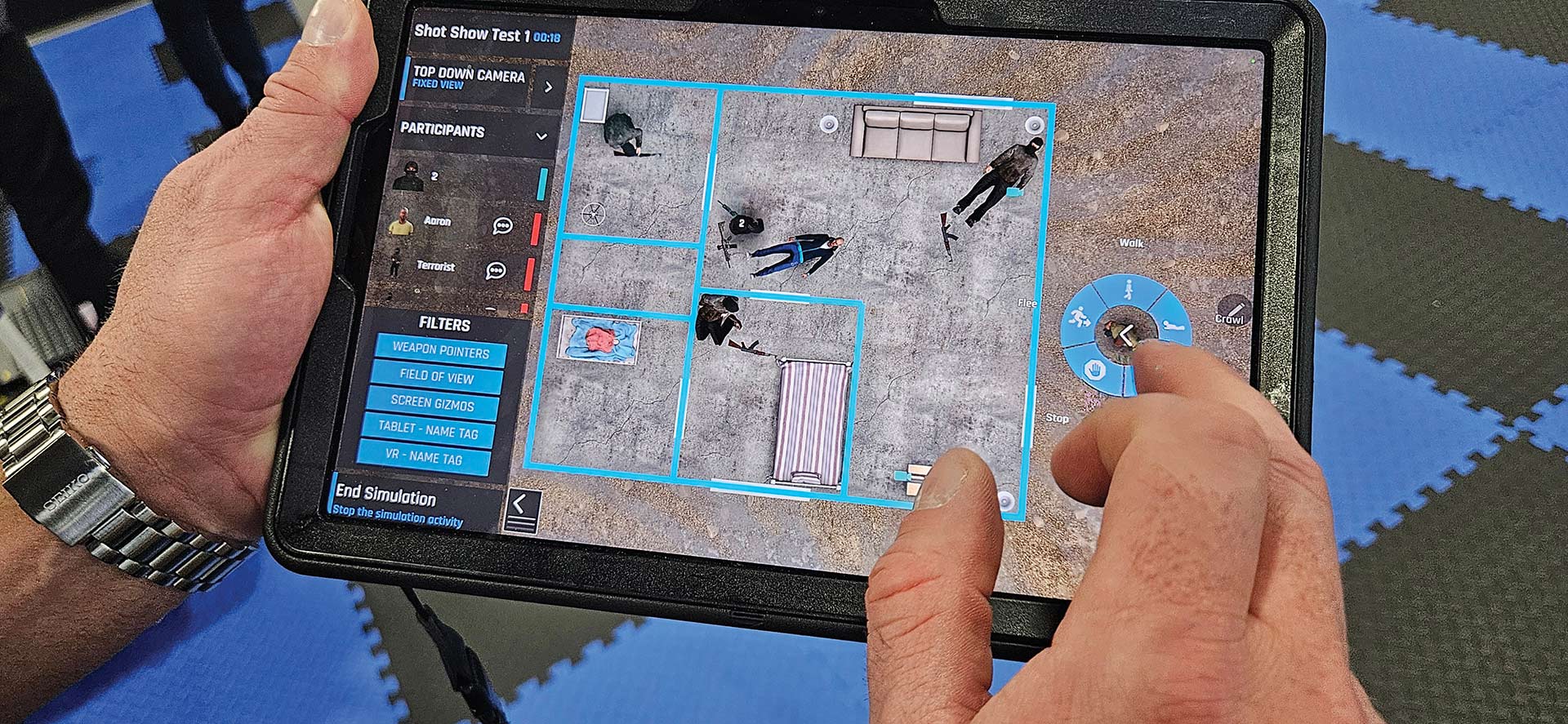
ACE Virtual Shooting Simulator
I was skeptical that a VR simulator could improve shooting skills. I was wrong. In hindsight, simulators are used every day to train officers, pilots and surgeons, so why wouldn’t a VR system help improve shooting performance? The movement and target responses are realistic, and the guns and optics perform just as they would during live fire.
The training options include hundreds of stages taken from matches and drills written by some of the best shooters and instructors. There are drills for accuracy, sight acquisition, target discrimination, threat assessment and transitions. Some even allow you to practice working around vehicles and barricades, as well as shooting at a wide variety of static, reactive and moving targets. You won’t get bored shooting the same stuff over and over because new drills are constantly being added.
Instructors can cast video from the VR headset to a phone, laptop or television to see what the user is seeing. This provides a tremendous opportunity for feedback, as instructors can observe both the shooter and what the shooter is experiencing. Coaching, diagnosing and learning is accelerated using ACE, and the amount of training that can be done far surpasses traditional dry-fire and live-fire repetitions.
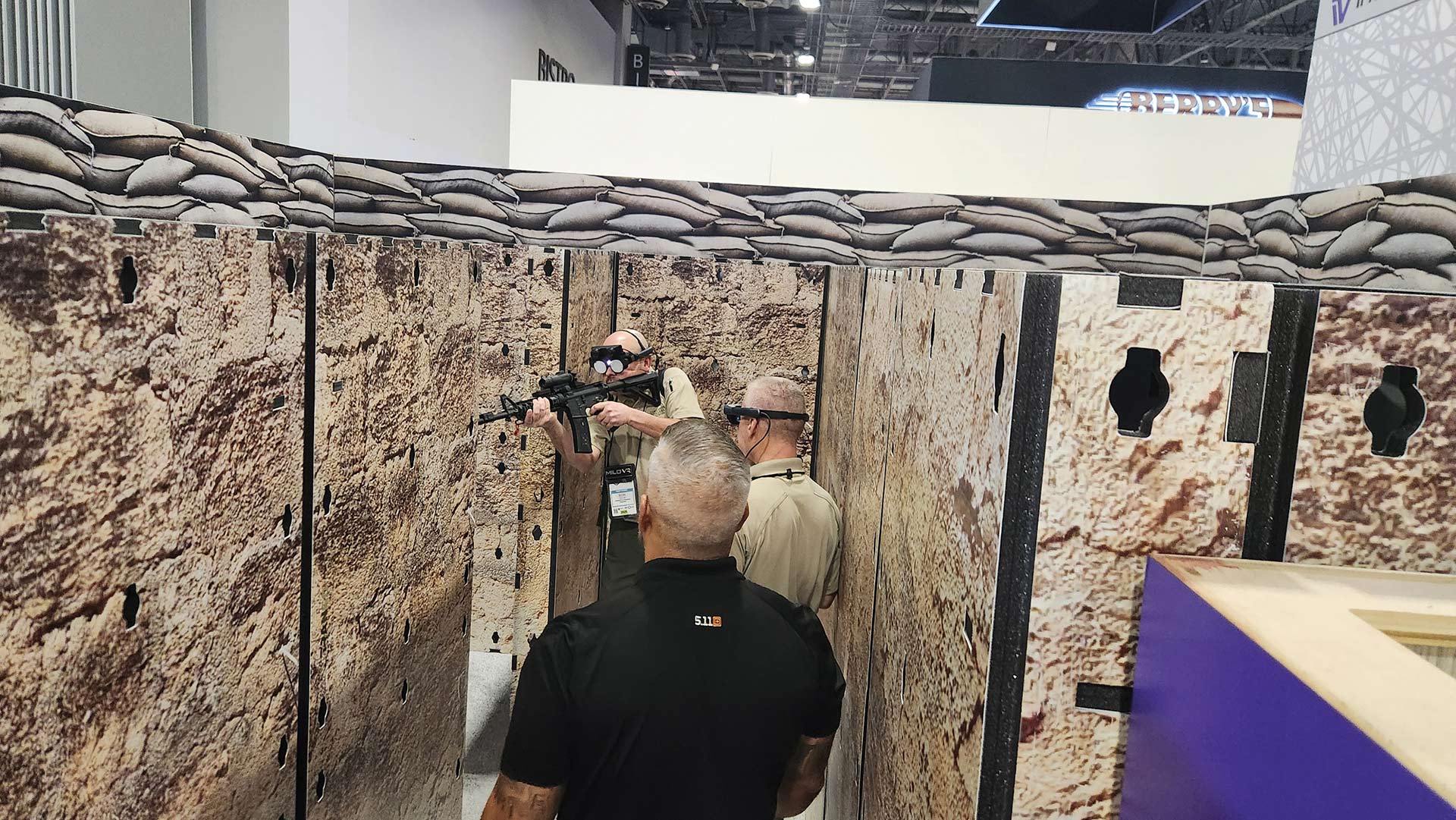
MILO VR
The MILO VR system allows officers to practice tactical movement, de-escalation strategies and communication skills through scenarios that simulate the realities they face in the field. MILO VR was designed with input from law enforcement and subject-matter experts to ensure relevance, realism and effectiveness.
A lot of work and intentional design went into creating immersive VR scenarios that promote critical thinking, decision-making and information gathering. The graphics and realistic interactions between the user and the subjects enhance awareness of the environment, leading to improved positioning and situational awareness. The MILO VR system encourages natural movement, active scanning, checking blind spots and use of cover.
MILO VR’s scenario library includes an extensive lineup of real-world challenges, including domestic disputes, armed encounters and interactions with individuals in crisis. The system features advanced tools such as customizable character selection and voice recognition, allowing trainers to modify environments, switching them from day to night, adjusting weather conditions like rain or sun and utilizing tools such as flashlights.
The best part of the MILO VR system is the ability to support thorough debriefings. Instructors can debrief scenarios from multiple perspectives, flag events on the timeline for review, assess use of force, review officer commentary and observation skills, evaluate cover and tactics, and analyze what the trainee saw during the event through their viewpoint.
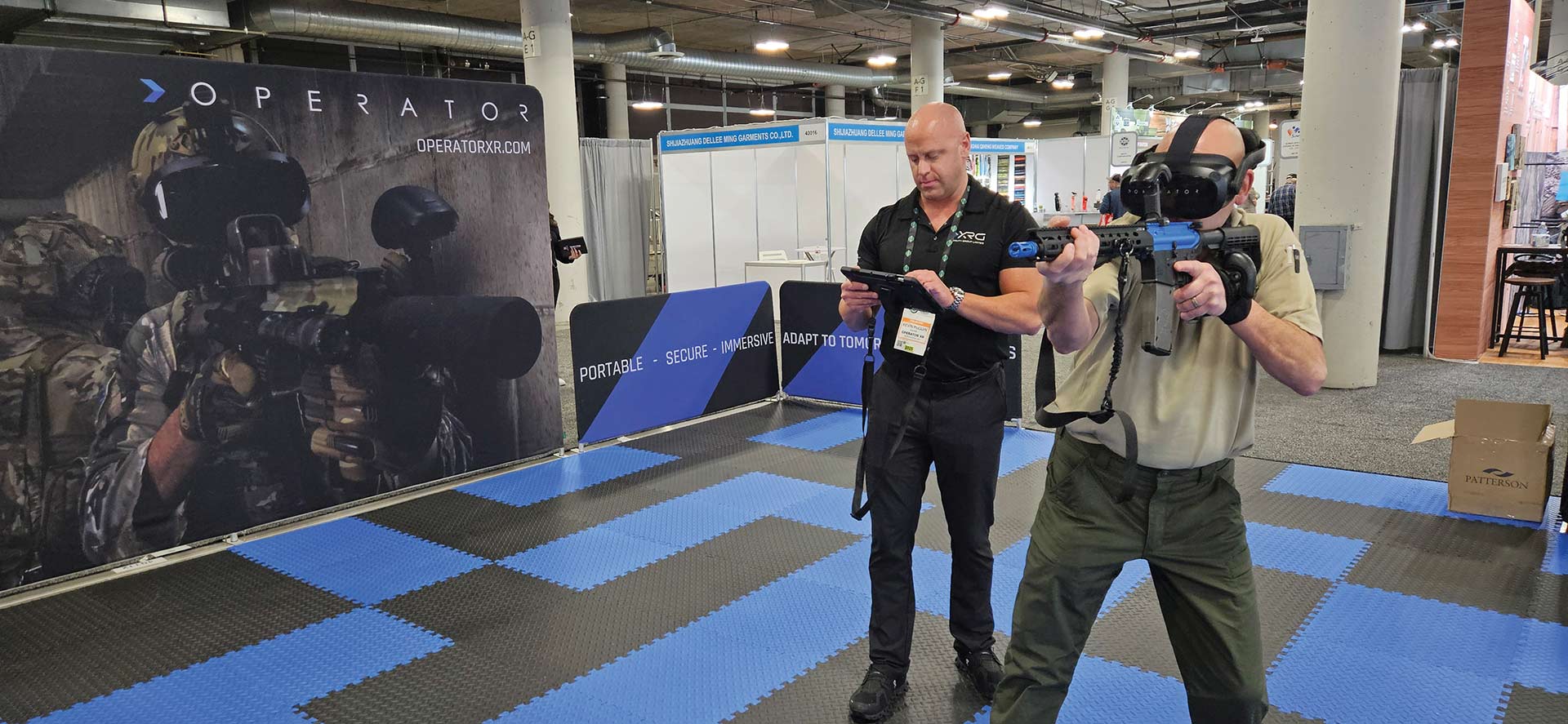
InVeris Training Solutions
Caswell International and Firearms Training Systems (FATS), Inc., are two pioneering companies in the firearms and scenario training world that combined to form InVeris Training Solutions. Their FATS VR system uses cutting-edge VR technology to rapidly improve communication skills, decision-making ability and situational awareness.
The FATS VR system uses top-of-the-line commercially available VR headsets to place officers in fully immersive environments where they can interact with a variety of subjects. Depending on the trainee’s actions, instructors have endless branching options, allowing them to escalate or de-escalate scenarios, communicate with students using the voices of the characters on screen and review decision-making from any angle during after-action review.
A step up on the reality scale is the InVeris augmented reality (AR) system. Unlike systems that provide a synthetic environment, FATS AR blends real environments, obstacles and live team members with computer-generated imagery (CGI) virtual characters. Operators see their own hands, feet, weapons, teammates and surroundings alongside CGI elements enabled by the FATS AR and mixed reality (MR) headset and system. The characters in the InVeris AR system can be dressed in different clothing, carry various items and react differently based on the officers’ actions during the scenario. Reality and the virtual world blend seamlessly in the InVeris AR system.
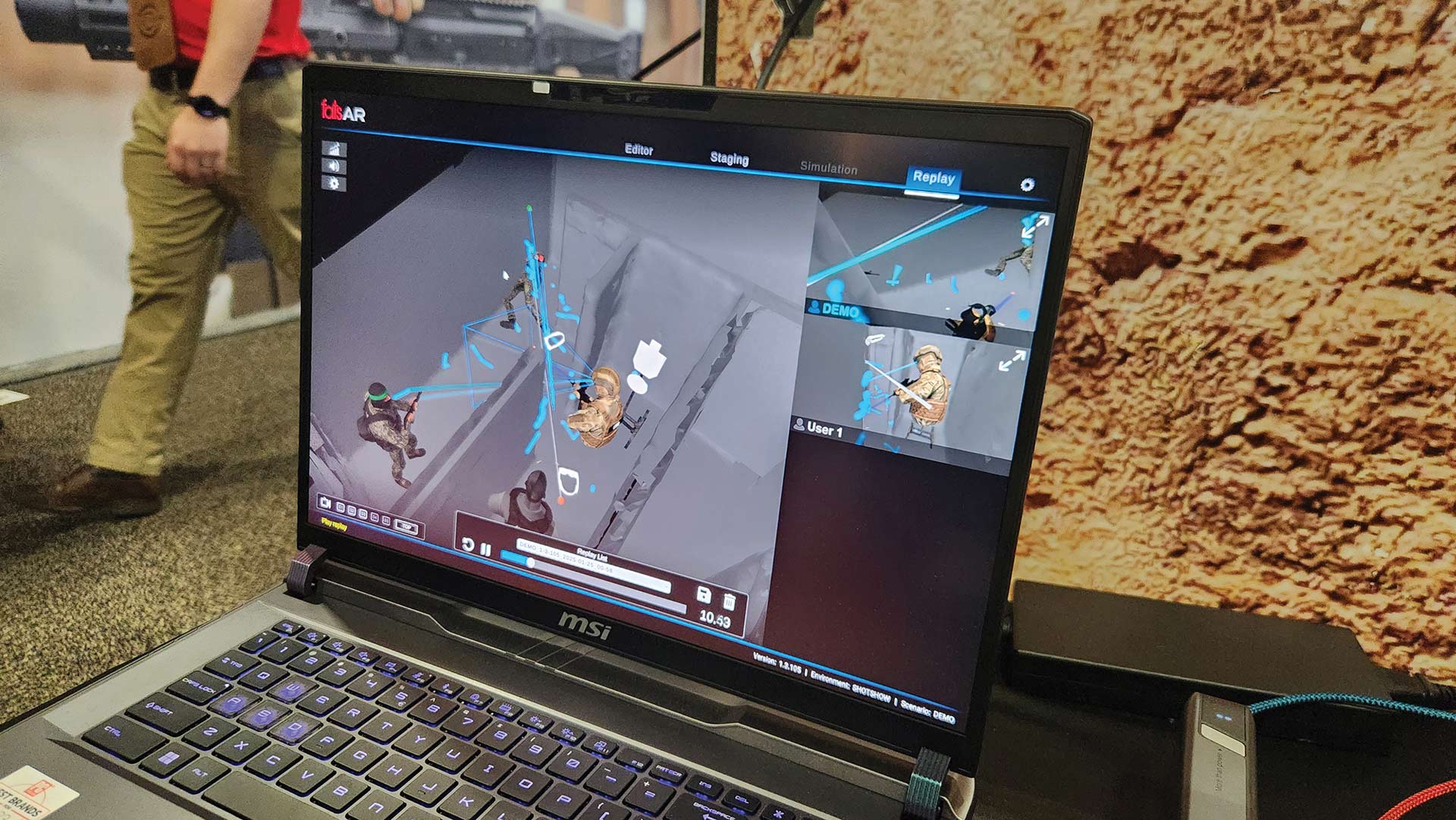
Operator XR
Operator XR was formed by a group of special forces soldiers and specialized engineers who understand the complex nature of operational environments. Operator XR’s OP-2 is an advanced mission rehearsal and training system that combines tactical training with innovative features developed from real-life feedback. This portable VR system weighs less than 40 pounds for the two-person setup and fits inside a 56-inch case.
The Operator XR OP-2 Scenario Creator Suite allows instructors to design customized and interactive training environments. There is a large library of high-quality, pre-built scenes and over 100 interactive props, including vehicles, forensic evidence, cover options and everyday objects. These can be placed and manipulated within scenarios to add realism and complexity.
Another notable feature allows instructors to quickly sketch building layouts with user-friendly tools to accurately recreate floor plans, ensuring trainees experience environments similar to those they’ll face in the field. This allows users to visualize movements, actions and decisions from multiple perspectives. Once a scenario is built, instructors can adjust it during training sessions to challenge trainees and address specific needs as they arise.
Operator XR OP-2 is loaded with dynamic characters — including suspects, bystanders and crowds — who react to commands and real-time events. You can choose different instructor-controlled characters, or instructors can function as real-life suspects using the role-player headset. Everything from tactical proficiency, situational awareness, de-escalation and use-of-force decision-making can be trained and evaluated.
From an affordable VR firearms training unit to an advanced augmented reality system, we have entered a new realm of online training opportunities. There are products available to meet all your needs, including mission rehearsal, de-escalation training, use-of-force decision-making and much more. Check out some of the new ways to enhance training and make it great again.
As seen in the August 2025 issue of American Police Beat magazine.
Don’t miss out on another issue today! Click below:






